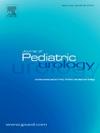机器人获取的活体供体肾脏移植到儿童接受者体内。
IF 1.9
3区 医学
Q2 PEDIATRICS
引用次数: 0
摘要
背景:使用活体供体进行儿童肾移植可提供最佳的长期移植和患者生存率;然而,到2021年,它只占美国移植手术的28.5%。机器人辅助活体供体肾切除术被证明是一种安全可行的选择,提供了增强的可视化和改进的手术灵活性,允许潜在地增加儿童肾移植受者的活体供体库,即使是在移植物解剖变异的情况下。方法:我们回顾了2022年10月至2023年7月期间在我们机构接受开放肾移植和机器人获取的活体供体移植的所有儿科患者(≤18岁)。获得并分析了受者和活体供者的人口统计数据、手术前后数据和移植物特征。结果:对8名儿科受者进行了评估。受赠人平均年龄11岁,男性7人。4例肾移植需要术后重建:3例进行血管重建(2例需要已故供体血管移植作为肾静脉的延伸;一个需要连接两条肾动脉),一个接受了囊肿切除。平均冷缺血时间73 min,热缺血时间29 min。没有移植功能延迟或术后血管或泌尿系统并发症的病例。移植后1、3、6、12个月的平均血清肌酐值分别为0.785 mg/dL (N = 8)、0.808 mg/dL (N = 8)、0.818 mg/dL (N = 8)和0.9 mg/dL (N = 3)。结论:我们的研究表明,机器人获得的活体供体肾脏移植物,即使存在解剖变异,也是儿童肾脏移植安全可行的来源。血管重建后使用血管异常的移植物进行移植似乎不会增加发生并发症的风险,因此,可以增加儿童移植候选人的供体池。本文章由计算机程序翻译,如有差异,请以英文原文为准。
Robotically procured living donor kidneys transplanted into pediatric recipients
Background
Use of living donors for kidney transplantation in pediatric recipients provides optimal long-term graft and patient survival; however, it accounts for only 28.5 % of transplants performed in the United States in 2021. Robotic-assisted living donor nephrectomy is shown to be a safe and feasible option, offering enhanced visualization and improved surgical dexterity, allowing for a potential increase in the living donor pool for pediatric kidney transplant recipients, even in cases of grafts with anatomical variants.
Methods
We reviewed all pediatric patients (≤18 years of age) that received an open kidney transplant with a robotically procured living donor graft at our institution between October 2022 and July 2023. Recipient and living donor demographics, peri- and post-operative data, and graft characteristics were obtained and analyzed.
Results
Eight pediatric recipients were evaluated. Mean recipient age was 11 years, and seven recipients were male. Four kidney grafts required back-table reconstruction: three underwent vascular reconstruction (two requiring deceased donor vascular grafts as extensions of renal veins; one requiring conjoining of two renal arteries), and one underwent cyst removal. Mean cold and warm ischemia time were 73 and 29 min, respectively. There were no cases of delayed graft function or post-operative vascular or urological complications. Mean serum creatinine value at 1, 3, 6, and 12 months post-transplant was 0.785 mg/dL (N = 8), 0.808 mg/dL (N = 8), 0.818 mg/dL (N = 8) and 0.9 mg/dL (N = 3), respectively.
Conclusion
Our study shows that robotically procured living donor kidney grafts, even with anatomical variants, are a safe and feasible source for pediatric kidney transplantation. Utilization of grafts with vascular abnormalities for transplantation after vascular reconstruction does not appear to increase the risk of developing complications and therefore, can increase the donor pool for pediatric transplant candidates.
求助全文
通过发布文献求助,成功后即可免费获取论文全文。
去求助
来源期刊

Journal of Pediatric Urology
PEDIATRICS-UROLOGY & NEPHROLOGY
CiteScore
3.70
自引率
15.00%
发文量
330
审稿时长
4-8 weeks
期刊介绍:
The Journal of Pediatric Urology publishes submitted research and clinical articles relating to Pediatric Urology which have been accepted after adequate peer review.
It publishes regular articles that have been submitted after invitation, that cover the curriculum of Pediatric Urology, and enable trainee surgeons to attain theoretical competence of the sub-specialty.
It publishes regular reviews of pediatric urological articles appearing in other journals.
It publishes invited review articles by recognised experts on modern or controversial aspects of the sub-specialty.
It enables any affiliated society to advertise society events or information in the journal without charge and will publish abstracts of papers to be read at society meetings.
 求助内容:
求助内容: 应助结果提醒方式:
应助结果提醒方式:


